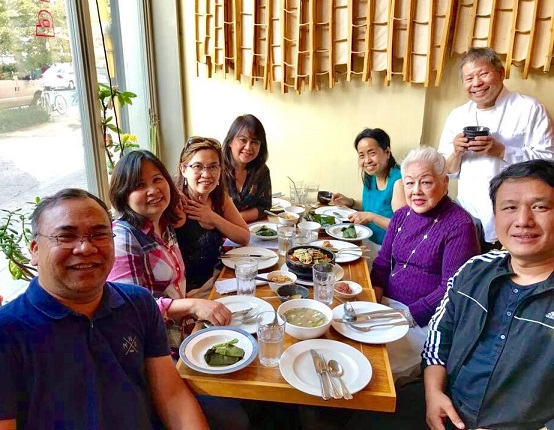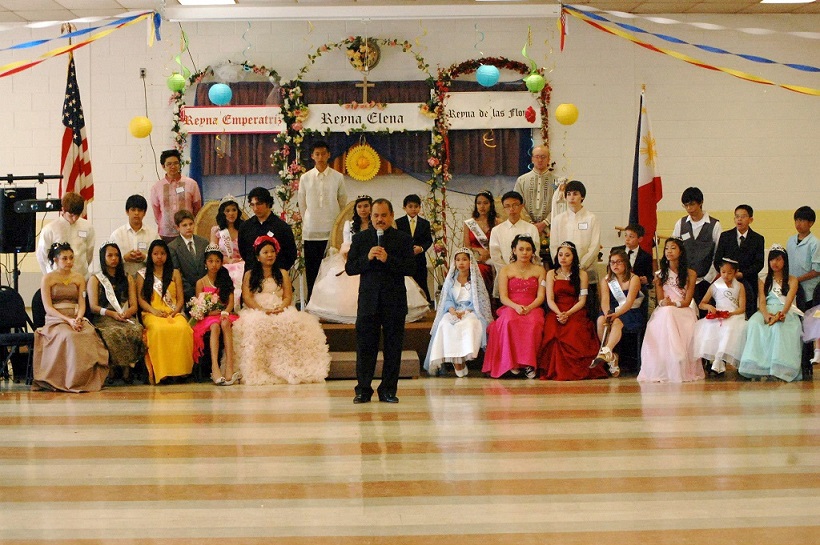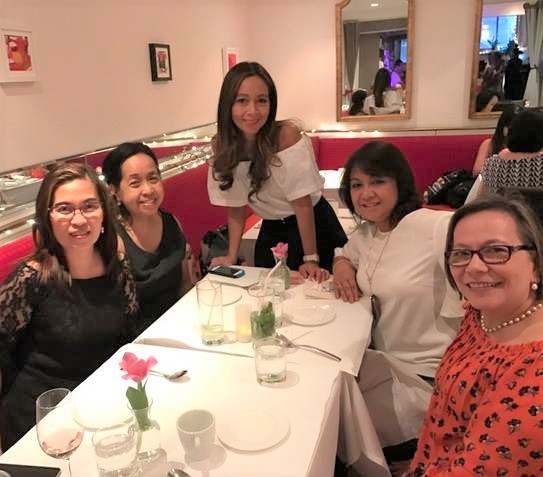Filipino Restaurant Week: Not a food review

Purple Yam chef Romy Dorotan whips up a Filipino Restaurant Week feast for this table of FilAm customers. Photo by Grace Labaguis
Filipino Restaurant Week – two weeks actually – is winding down. It was a great excuse to visit restaurants that are off the beaten path, or to try Pinoy food fused with another culture’s culinary concoctions.
In the last two years that I’ve made FRW an occasion to hang out with friends over plates of Lumpia Shanghai, it also became a time to reflect over what the event is about: Is it meant to promote Filipino food (and with it Philippine culture), or to promote Filipino restaurants?
These are not mutually exclusive notions. Joining this year’s event are Megu, a Japanese restaurant whose chef, Frances Tariga-Weshnak, is Filipino; and Maison Hugo, a French bistro, whose French chef, Florian Hugo, is married to a Filipina, Michelle Hugo. Both restaurants are FRW first-timers.
No anecdotal boast, but Megu and Maison Hugo were packed during FRW. Some FilAms were curious how French-style Adobo would taste like, or if there were other ways to prepare our food raw without mimicking the Kinilaw or the Ceviche? Many wondered if the Adobo would become a mainstay on the Maison Hugo menu. Seeing the crowds during our visits, we thought FRW did wonders to introduce Filipinos to both restaurants.
If the idea was to promote Filipino food, we thought, why was the price a little on the high side? Prix-fixe lunch for $25, dinner for $35? Isn’t affordability the best magnet for customers? It was, after all, the hook behind the New York Restaurant Week which set aside one week in the Spring of 1992 to encourage fine dining at expensive restaurants “at the fraction of the usual prices.” These were some of the questions we reflected on as we munched on Starters all the way to Dessert.
More observations
Some of the restaurants did not advertise FRW on their websites. Maison Hugo did a terrific FRW opener on its website. Ugly Kitchen produced a short video about FRW showing Chef Aris Tuazon in his kitchen kingdom. In some restaurants, no FRW signage is visible outside their doors. Not even a poster issued by the Philippine Consulate, which considers FRW a “flagship project.” Some are not aware that there is this special event from May 15 to 31 celebrating the sumptuousness of Filipino food and the talented chefs who create them.
In one restaurant we visited, we asked the wait staff if they have the FRW menu. She said, ‘Meron po,’ and then recited the dishes from memory. Because we are familiar with all the dishes, we knew what she was talking about. Not all customers would appreciate having to decipher Tagalog. Adobo, Menudo, Asado may all sound the same to an American ear. A special FRW menu – typewritten with a short explanation of the dishes or written on a blackboard – might help with the ordering decision.
In another restaurant, we asked the same question.
“Wait, let me call the owner; he would know,” said the wait staff. How can this eatery promote Filipino food if the staff did not know what they are?
Some owners said FRW has brought them good business, others were indifferent. One participating restaurant had mostly empty tables. When asked if FRW was working for her, the owner said she relies on her loyal customers, and she’s got lots of them.
Purple Yam in Brooklyn was fully booked when we were there. Our party of seven was the only Filipino table. Owner-chef Romy Dorotan was one hospitable host, supplying us with food that is not even part of his FRW menu. One by one, they were brought to our table as if in a procession: Bicol Express, Inunun or fish in lemon sauce, Binagoongan Rice, and the divine Champoy Ice Cream. Romy applied the same prix-fixe of $35 for what seemed like a feast.
In the end, we all thought Filipino Restaurant Week was not so much about how hefty the servings were, how differently the Adobo tasted, or how interesting the Ukoy was interpreted by two different restaurants. It is, in essence, how the restaurants value their guests, make them feel welcome and at home – no matter how impatient at the slow service and hungry they are.
Copyright (C) 2017 The FilAm












